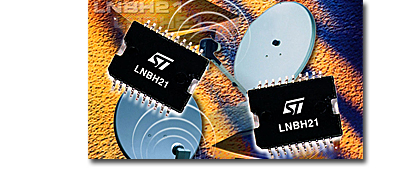|
|
 |
Knowledge Is Key
For Intelligent Decisions
Satellite Logic is a leading,
authoritative source of information in
the Satellite Industry. Located in the
heart of the Silicon Valley, Satellite
Logic provides one of the most
valuable and comprehensive
knowledge bases on the Satellite
market! This is a primary Worldwide
information center which enables our
clients to analyze, evaluate, inquire
and select their best tailored
solutions. Our company sets the
industry standards for targeted
buying leads, reflecting a dramatic
advance over traditional marketing
solutions.
|
|
|
 |

The satellite dishes used for receiving the amplified signal are designed
to capture the incoming radio waves and then focus them onto the feed
horn. In the perfect world, there would be no obstructions between the
orbiting satellite and dish making for a clear signal. It does happen though,
that a satellite dish may need to pick up signals from 2 or more satellites
at the same time. In such a case, a satellite dish with a single feed horn
may work, but it would need to be aimed to a position where it can receive
information from both orbiting satellites. The disadvantage of such an
arrangement is that the aim on the dish s not optimized, so signal clarity
drops significantly. A dish of a different design with 2 or more feed horns
helps to restore the quality of the signal. This type of arrangement works
by allowing the information from one satellite to hit one feed horn, and the
information from the second satellite to his the second feed horn.

The feed horn in a satellite dish consists of a low noise blockdown
converter (LNB), which works to amplify the radio signal even further. It
also works to filter out noise from the signal. The LNB then sends the
filtered and amplified signal to the receiver.
The receiver serves 5 functions:
 De-scramble the encoded signal. For this, the receiver requires the De-scramble the encoded signal. For this, the receiver requires the
proper decoder chip that corresponds to the particular program package.
It is worth noting that the broadcaster has the ability to communicate
with the chip via the satellite broadcast in order to adjust its decoding
programs. The broadcasters also periodically send out signals that
work to thwart the illegal activity of using illegal de-scramblers.
 Keep track of pay-per-view programs, and communicate with the Keep track of pay-per-view programs, and communicate with the
service provider's billing center to keep track of billing information.
 Extract the individual channels from the satellite signal. Since the Extract the individual channels from the satellite signal. Since the
receiver can only split out one channel at a time, the viewer is unable
to record one program while watching another. The purchase of another
receiver is necessary for this.
 Conversion of the mpeg-2 information back to an analogue format Conversion of the mpeg-2 information back to an analogue format
that televisions can recognize. In the case of the USA, this is the
NTSC format. For Europe, it is PAL.. Depending on the receiver,
HDTV might also be a format that is output.
 Receive the programming schedule from the service provider, and Receive the programming schedule from the service provider, and
present this information onto the television screen. Some receivers
have other functions such as patental locks that allow for control over
what channels can be viewed. Some receivers even have built-in
digital video recorders (DVRs) that allow the viewer to pause live
television, or even record it onto a hard drive.
|
|
|
|
